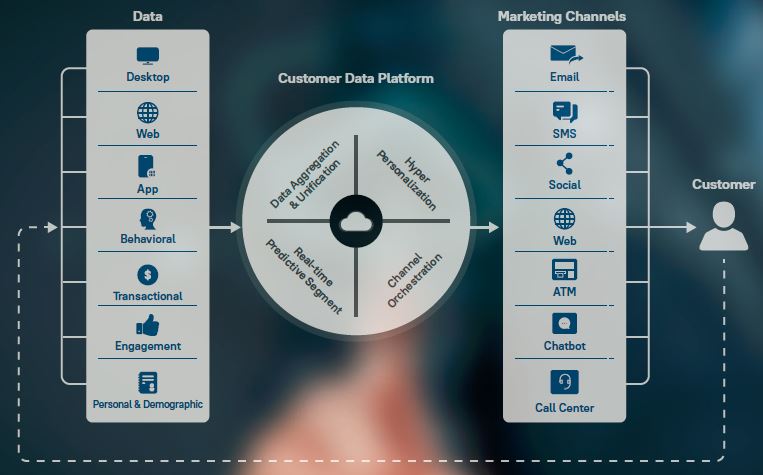COVID-19 has brought on accelerated digitization in almost all industries across the globe. In the past year, enterprise marketers have been busy making their technology stacks adapt to this rapid digitization. According to the CDP Institute, the number of CDP deployments has seen a sharp increase in 2020 compared to the previous year. Over 29% of respondents in the survey said that they had already deployed a CDP. And 22% of them said that they planned to start deployment in the next 12 months.
Therefore as the interest in CDPs keeps going up among marketers, there have been doubts and questions about CDPs and Personalization Engines. This article aims to explain how a Customer Data Platform and a Personalization Engine are different from each other.
What is a Customer Data Platform?

The CDP Institute defines a Customer Data Platform as, “A packaged software that creates a persistent, unified customer database that is accessible to other systems.”
A CDP can aggregate and unify 1st, 2nd, and 3rd party user data from disparate sources in one central location. The data is unified for each individual user which enables marketers to get a single or 360-degree view of the user. Marketers can then draw valuable insights from the unified view and understand each user’s needs and wants. Based on the insights, they can target users with personalized messages and offers via various marketing channels that are connected to the CDP.
What is a Personalization Engine?

A Personalization Engine (PE) uses insights from a user’s behavioral data along with data of other similar users to deliver a personalized experience to the user. The information that is delivered to the user is contextually-relevant and matches his/her needs and preferences.
Personalization engines work by resolving user identities across channels and devices. They then use advanced AI and Machine Learning-based algorithms to make predictions of what users exactly need. This is done by analyzing their click propensity, purchase history, buying propensity, etc. The more data these engines are able to access and analyze, the more accurate will be the predictions.
CDP Vs Personalization Engine
-
A CDP is the ideal tool to aggregate and stitch together user information from various data silos and online/offline sources to create unified profiles for users. A personalization engine is not quite adept at unifying data like CDPs.
-
Marketers make use of a CDP to create user segments that fall under their desired categories and then orchestrate personalization. When it comes to PEs, marketers can craft and implement unique personalized journeys at an individual user level.
-
CDPs are great at integrating with legacy and best-of-breed technology stacks. This enables marketers to sync and unify data from these systems and enrich the unified user profiles. Personalization engines have basic integration capabilities and do not have seamless and easy integration features as CDPs.
-
With a CDP, the main focus is on unifying customer data and creating the perfect single customer view. It, of course, facilitates 1:1 real-time personalization by enabling marketers to connect unlimited marketing channels to it. For a PE, the main focus is to deliver a unique and satisfying personalized experience to the user across multiple channels. Due to their advanced AI algorithms, they are really good at predicting user behavior and achieving 1:1 real-time engagement with every single user.
In Conclusion
CDPs and PEs are both powerful tools that have elevated data-driven marketing and transformed the customer experience for enterprises. A CDP’s main strength is its data aggregation & unification capability and a PE’s main strength is that it delivers true personalization to users as per their expectations with help of AI and machine learning.
For the best outcome, marketers can integrate a personalization engine with a CDP. In this way, enriched user data is fed from the CDP to the PE. And the PE can utilize the data to orchestrate a satisfying and unique personalized experience for each user across channels. This integration is highly beneficial as marketers can make better business decisions and tailor their campaigns to be more targeted and focused on each user.
By Bijoy K.B | Marketing Manager at Lemnisk

Leave a Reply